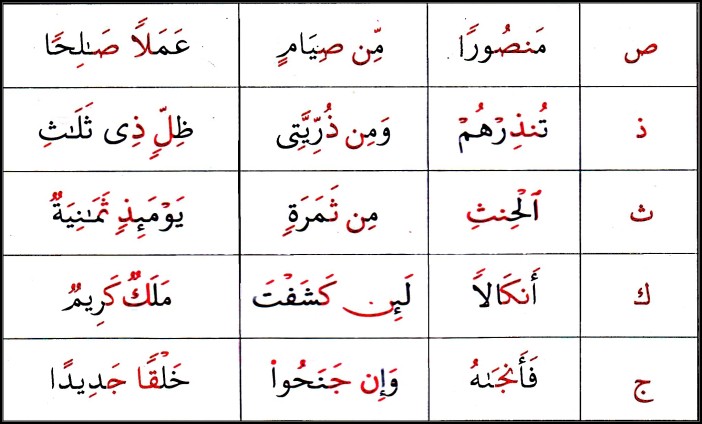Ikhfaa is one of the Tajweed rules, the word “Ikhfaa” means hiding or concealment. But in Tajweed, Ikhfaa means to pronounce the letter between Izhar and Idgham. So Ikhfaa as a rule of Tajweed not meaning absence of the letter , it just means to reduce its pronunciation and be pronounced with “Ghunna” which is a sound comes out of the gill, the gill is the far nose inside.
Ikhfaa: Conditions of
Ikhfaa is applied in identified places with identified conditions, and these conditions are; presence of Noon sakenah ” Static Noon”, or Tanween “Nunation” followed by one of the Ikhfaa letters, either in the same word or in two words next to each other. And this is called (Real Ikhfaa).Applying of Real Ikhfaa:
It is applied to the Noon or Tanween when it is followed by one of the Ikhfaa letters by pronouncing the Noon or Tanween with opening the lips a little bit to allow air to pass. This would weaken their sound with keeping the sound of Ghunna.Letters of Ikhfaa:
They are fifteen letters, when one of them comes after Noon sakenah or Tanween, they cause Ikhfaa of the Noon or Tanween. Sad, as in “An*- Slatehim” Dhal, as in “An*Dhartokum” Thaa, as in “ma’n*-thagaga” Kaf, as in “Aly’n*-kbira” Geem, as in “In*-gaakum”. Sheen, as in “men*-shr” Qaf, as in “yan*qalip” Seen as in “men*-sejeel” Dal, as in “Lekole’n*-daragat” Taa’, as in “men*-taybat” Zal, as in “yawmethe’n*-zorqa” Faa’, as in “man*-fy” T, as in “an*-tathbaho” Dad, as in “man*dood” Zaa, as in “zela’n*-zalyla” Where (*) is the place of Ikhfaa, (n) is Noon letter, and (n’) is Tunween. And this Noon or Tanween is pronounced with Ikhfaa as it came before one of the fifteen letters of Ikhfaa, either in the same word or two words.Ikhfaa of Meem sakenah (Oral Ikhfaa):
Meem sakenah is the static Meem, and this oral Ikhfaa is applied to the static Meem if it comes before the (Baa’) letter. The oral Ikhfaa means (labial Ikhfaa) relative to the lips, and is called so, because the “Meem” and” Baa” are pronounced by lips. here Meem is pronounced with weakening and keeping of Ghunna. Examples for Oral Ikhfaa: (Trmihem*-behegara), (kalbohum*-basit), where (*) is the place of Oral Ikhfaa, and Meem sakenah comes before Baa’.Ranks of Ikhfaa:
These ranks are divided according to the proximity to the Noon pronunciation place in the mouth, as following;1)T, Taa, and Dal, are the most closest to the Noon.
Here, the Ikhfaa is the most, and the time of Ghunna sound is the least, as in (man*-tab), where (*) is the place of Ikhfaa and Ghunna sound.2)Qaf and Kaf, are the most distant from the Noon.
Here, the Ikhfaa is the least, and the time of Ghunna sound is the most, as in (man*-kan), where (*) is the place of Ikhfaa and Ghunna sound.3)The rest of the Ikhfaa letters are in the middle.
Here, the Ikhfaa is medium, and the time of Ghunna is medium too, as in (Leman*-sabar).This shortcode LP Profile only use on the page Profile



